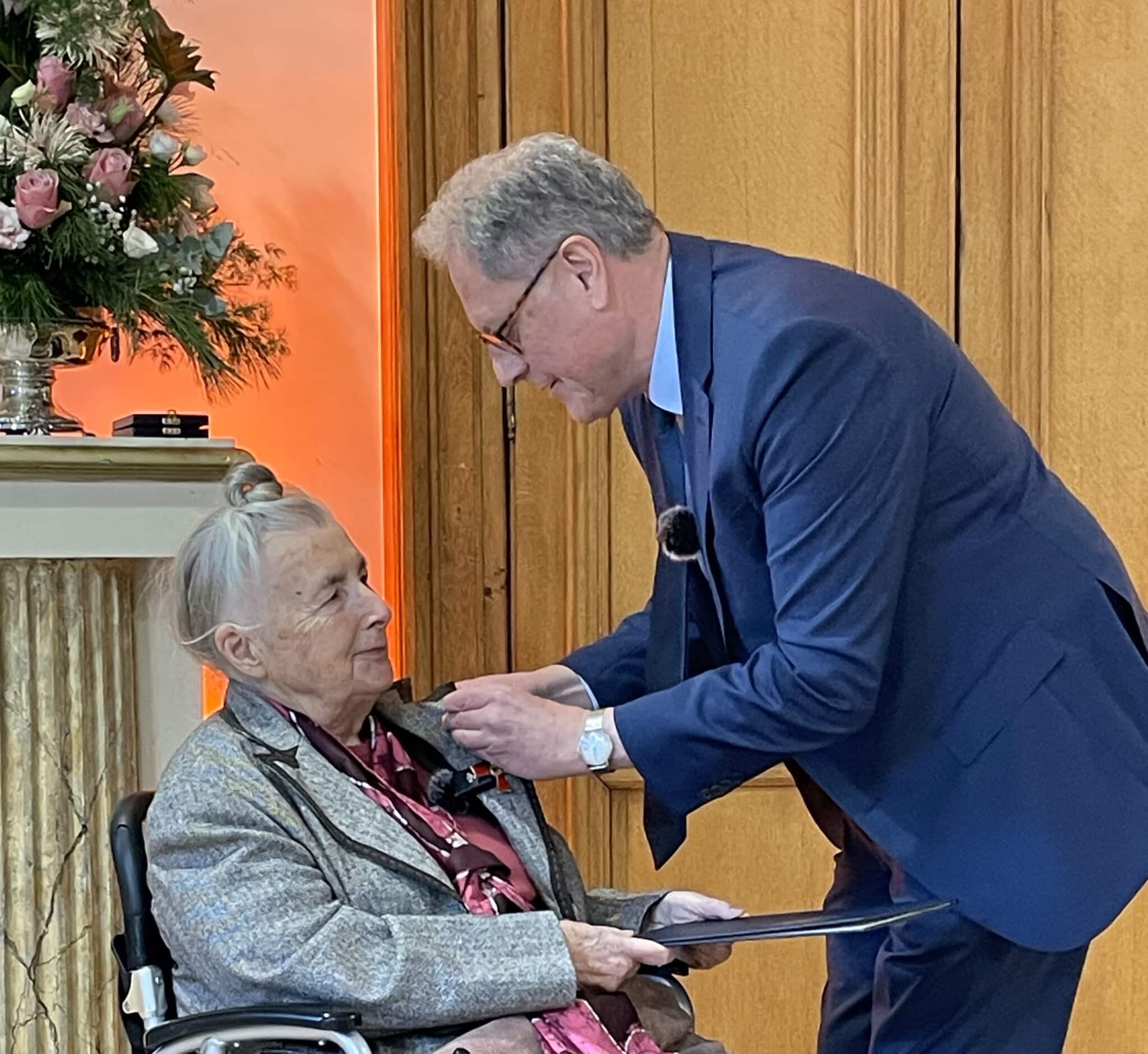At the Red Cross camp, prisoners could eat their fill of milk and rice gruel. At first, Adolphe ate as much as two litres (1/2 gallon) at each meal. Slowly his strength returned. But his emotional condition was another matter. Painful questions plagued him. It had been more than six months since he last heard from Eugenie. Haunting questions—what? where? how?—robbed him of sleep. The doctors refused to release him, knowing he could not take the long and hazardous trip from Austria to faraway Alsace. The last train returning deported survivors left without Adolphe.
When Adolphe was finally able to leave, he had to travel on his own. He left with a document from the U. S. Army granting him access to free food and shelter on his journey. He also carried an army blanket and his only other possessions—a bowl and spoon tied at his waist. He had guarded them jealously from camp thieves, knowing that no bowl meant no food, and no food meant death. Adolphe was a mere shadow when he left Bad Ischl—deaf, toothless, weighing a mere 49 kg (about 100 lbs).
The long journey home brought Adolphe across the French border to the city of Strasbourg. From there he took the train to Mulhouse, which ran close by his house. As the train drew closer, his heart started pounding. Much of the town bore heavy battle scars and lay in ruins. To his great relief, he saw that the apartment house at 46 Rue de la Mer Rouge stood intact. A new wave of anxiety swept over him at the railroad station as he saw another swath of bombed-out ruins. Had Adolphe Koehl’s barbershop survived? He mustered up strength to pick his way past the flattened ruins of the adjoining building and spotted the barbershop untouched. What is more, he found Adolphe and Maria at work inside. Their excited welcome revived his spirits, and his heart nearly burst at the news that his beloved wife and Simone had returned home safely. They had been waiting for him for weeks.
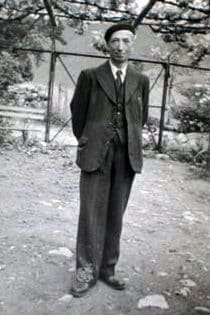
The Koehls explained that the French Red Cross had been unable to locate the former prisoner Adolphe Arnold and had listed him as missing. They considered Emma a potential war widow. Maria Koehl accompanied Adolphe home, as he walked with difficulty. Climbing up to the second floor was nearly beyond his strength. While he paused halfway to rest, Maria rang the bell. Simone opened the door and learned that her father had come. But Adolphe passed by her without a glance and fell speechless in Emma’s arms. He finally looked at his girl, now 15, and asked in disbelief, “Are you Simone?” She had gotten her father’s last painting lesson at age 11.
Emma and Simone had returned a few weeks earlier and had begun the slow recovery process. Grateful that their husband and father had returned alive, they could see immediately that Adolphe had not yet won the fight against death. Moreover, his hearing loss tragically hindered their attempts at precious communication.
Adolphe barely made the first post-war family reunion in Bergenbach. His wife’s family had all survived, but not so in his hometown of Krüth. His stepfather Paul Arnold, with whom he had never reconciled, had been hit by shrapnel and died. His niece had fled after being publicly humiliated for having relations with German soldiers. The villagers had laid hold of her and sent her off with a shaved head. Her brother died as a German prisoner of war in Tambow, Russia. During the reunion, Adolphe tried to talk about his experience, but everyone shut him out. “Who wants to talk abut the past?” they said. “After all, we all suffered.”
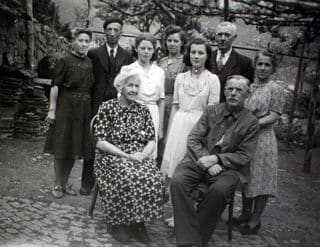
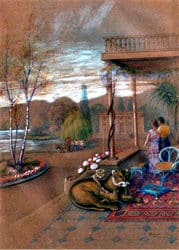
The battle for life began anew. Food was scarce. With ration coupons and limited ingredients, Emma found ingenious ways to cook nourishing meals to build up Adolphe’s devastated body. Often she had to awake him from terrifying nightmares of fighting off cannibals, calming him with soothing words and herb tea. It took months for him to revive. Slowly, the trembling ceased. One day he picked up his pastels to draw a picture he had worked out in his mind during those long years. It took much effort and many days, but when the work was finished, he had the confidence to return to work at Schaeffer.

An American Jehovah’s Witness named Martin Harbeck met the Arnolds on one of his frequent visits to Bern, Switzerland. He gave Adolphe a hearing aid, which partially mitigated Adolphe’s hearing problem. But he still could not hear well enough to resume his position as colourist. The factory management offered Adolphe work he could do at home in accord with his disabilities. About two years later, he was given an elaborate design by a Parisian artist. Could he find a way to reproduce the print on fabric while using fewer colours to keep the price down for the African market? From his home studio, Adolphe originated the first four-color composition in textile print. From then on, Adolphe served as Schaffer’s creative artist for the so-called fancy styles designed exclusively for the French African colonies.
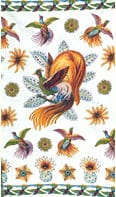
Adolphe encountered another challenge with his daughter. Simone was now 15, and after nearly two years in a German reformatory, she had become quiet and distant. The outgoing 11-year-old was nowhere to be found. Simone’s lack of motivation pained Adolphe. She had been expelled from Nazi school at age 11, and she showed no interest in returning to school. Her father finally had her enrolled in the art school he had attended as a boy. She hoped to become a missionary, but Adolphe believed that she should learn a trade first. After two years in art school, he brought her work from the Schaeffer factory, and for the next two years they rebuilt their relationship over paint pots and brushes. Simone’s blossoming gave Adolphe and Emma profound satisfaction. Adolphe’s wit and zest for life finally returned, as did his sense of humour. He joked with Simone that his ears were only good for holding his glasses.
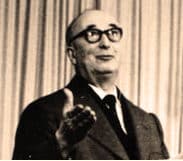
The family was knitted back together not only by art but by their common spiritual interests. Since their return alive from the inferno, all three had taken up their Christian activities. Adolphe had always been a devoted evangelizer and fine teacher. No matter the weather, he rode his bicycle, the same one he had ridden after his arrest, and reached people for miles around with the Bible message of hope. Adolphe’s eyes beamed once again.

Though his painful experiences had receded in the background, Adolphe often told his Bible students about the way he felt God’s watch-care over the family even when they were in the camps. His radiance and his recovery were proof in itself of the power of his faith. Simone again gave him added reason for joy and pride. Less than five years after their reunion, she left the house as a full-time evangelizer.

After Simone left, in 1950, Adolphe decided to continue doing her Schaeffer home work in the evenings. His hearing was gradually worsening, but he kept up the work for the next 12 years so he could support the international evangelizing work. After 50 years with the Schaeffer firm, his exceptional achievement and contribution to the company were rewarded with a gold medal.
Sadly one day he found his beloved Emma unconscious on the floor. She had had a heart attack. Adolphe, who was now completely deaf, needed Simone’s help. By this time Simone had married a fellow evangelizer, Max Liebster, and was living in Paris. They decided that the two couples would make a home together.
